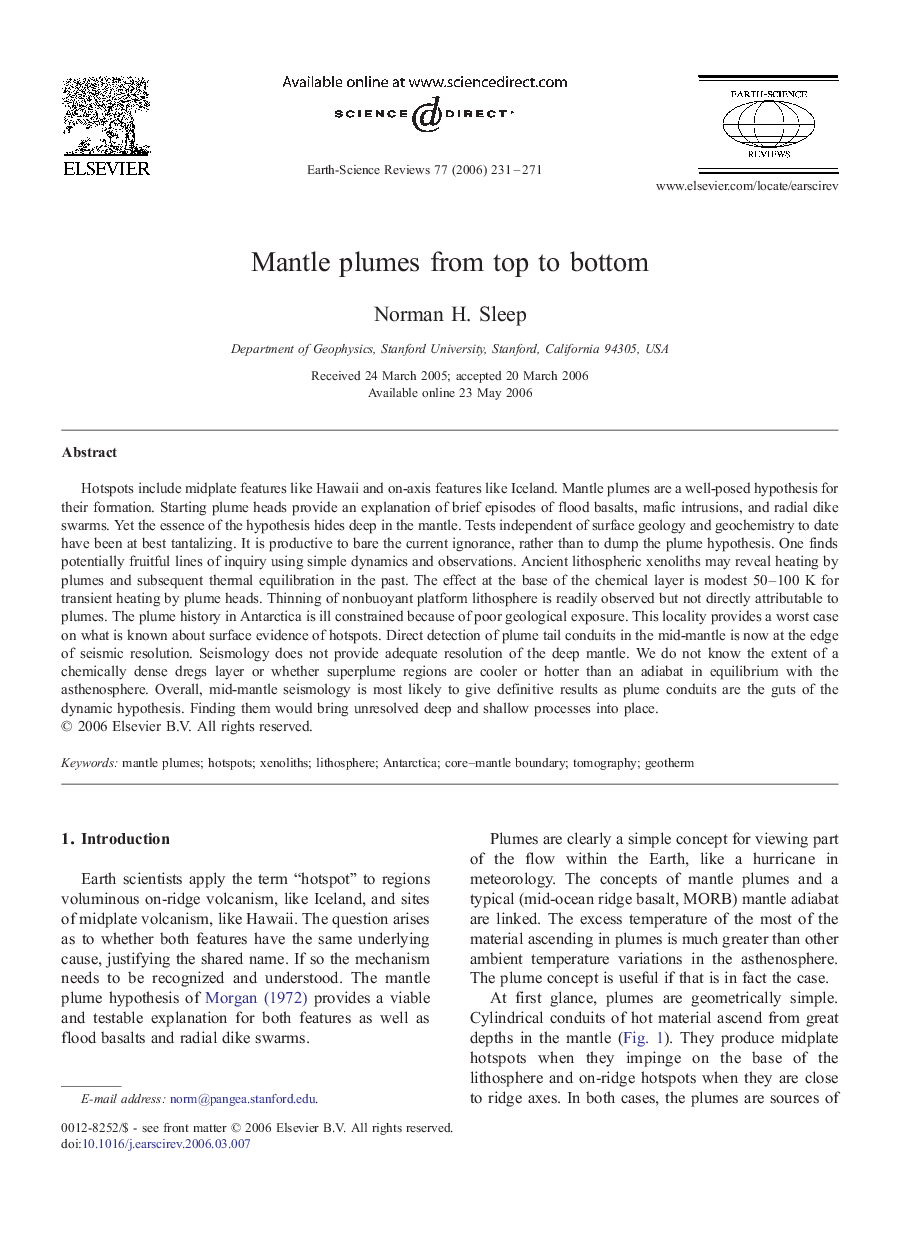| Article ID | Journal | Published Year | Pages | File Type |
|---|---|---|---|---|
| 4726512 | Earth-Science Reviews | 2006 | 41 Pages |
Hotspots include midplate features like Hawaii and on-axis features like Iceland. Mantle plumes are a well-posed hypothesis for their formation. Starting plume heads provide an explanation of brief episodes of flood basalts, mafic intrusions, and radial dike swarms. Yet the essence of the hypothesis hides deep in the mantle. Tests independent of surface geology and geochemistry to date have been at best tantalizing. It is productive to bare the current ignorance, rather than to dump the plume hypothesis. One finds potentially fruitful lines of inquiry using simple dynamics and observations. Ancient lithospheric xenoliths may reveal heating by plumes and subsequent thermal equilibration in the past. The effect at the base of the chemical layer is modest 50–100 K for transient heating by plume heads. Thinning of nonbuoyant platform lithosphere is readily observed but not directly attributable to plumes. The plume history in Antarctica is ill constrained because of poor geological exposure. This locality provides a worst case on what is known about surface evidence of hotspots. Direct detection of plume tail conduits in the mid-mantle is now at the edge of seismic resolution. Seismology does not provide adequate resolution of the deep mantle. We do not know the extent of a chemically dense dregs layer or whether superplume regions are cooler or hotter than an adiabat in equilibrium with the asthenosphere. Overall, mid-mantle seismology is most likely to give definitive results as plume conduits are the guts of the dynamic hypothesis. Finding them would bring unresolved deep and shallow processes into place.
